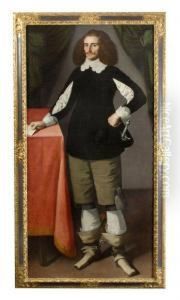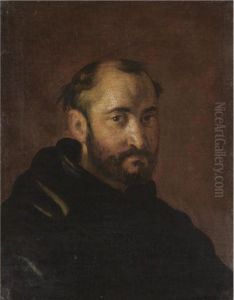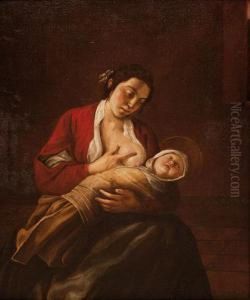Fray Juan Andres Ricci Paintings
Fray Juan Andres Ricci de Guevara, born in 1600 in Spain, was a notable figure during the Baroque period, especially recognized for his contributions as a painter, architect, and theorist. He was a member of the Trinitarian Order, a Christian religious community dedicated to the spiritual and corporeal assistance of those in need. Ricci's artistic journey was deeply intertwined with his religious vocation, and his works often reflected the spiritual ideals and instructive goals of the Counter-Reformation, which sought to reaffirm Catholic doctrine in the face of Protestant Reformation.
Ricci's education and artistic training are not thoroughly documented, but it is known that he was active primarily in Spain, leaving behind a significant body of work, including religious paintings, architectural designs, and writings on art theory. His approach to art was profoundly influenced by the mysticism and spirituality of his time, which is evident in his emotive depiction of religious themes. Ricci's paintings are characterized by their careful composition, use of light, and a vivid portrayal of religious figures, often aiming to inspire devotion and reflect the glory of the divine.
As an architect, Fray Juan Andres Ricci contributed to the design and construction of several convents and churches, where his architectural work was marked by a harmonious blend of functionality and aesthetic. His theoretical writings, while not as widely recognized as his artistic creations, provide valuable insight into the artistic principles and religious thought that guided his and his contemporaries' creative processes during the 17th century.
Ricci passed away in 1681, leaving behind a legacy that, while not as celebrated as some of his contemporaries, contributes a unique perspective to the understanding of Spanish Baroque art. His works continue to be studied for their artistic merit and as expressions of the period's intense religiosity and devotion.


